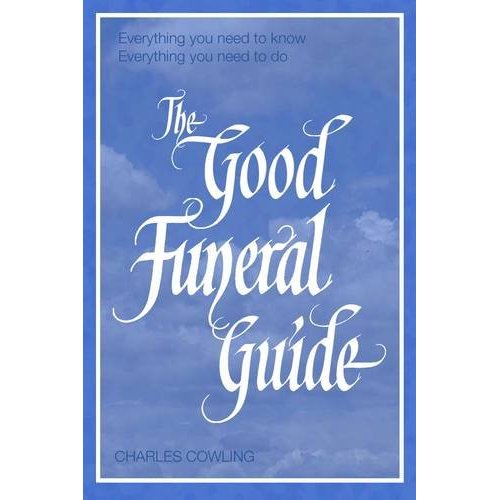Nick Gandon operates the UK’s first and, so far as I know, only dedicated direct cremation service. Here is the comment he left on this post from a few days ago, and which you might have missed. I first wrote about Nick here.
When I started out in the world of funerals, they were just that little bit less complicated, and the “big groups” just didn’t exist, (with maybe the exception of the Great Southern Group). Even the Co-Ops were still in “bite-size” individual chunks of local business.
In terms of evolution, 1970 was not that long ago, but in terms of business, thats another story.
Things were simple, costs were realistic – a “regular” cremation cost between £170 – £190 depending on the catering. Few firms thought of offering pipers, doves, fireworks, novelty hearses etc., and most funeral services had humble premises – with a chapel of rest at a chosen few. The Austin princess motor hearse was King.
Then along came big business and public expectation, driven by “what America does today”, and health and safety costs, profit margins, national advertising, working time directives etc etc.
Now, I’ve always supported the “is there anything else I can do for you?” approach of a conscientious Funeral Director, but, by segmenting the choice of Basic, Traditional and wherever else grades/costs of funerals, there obviously has to be a point where the FD draws the line.
It could be argued that in their haste to outdo Smith Bros down the road, Miggins Bros Undertakers have created a financial rod for their own back, and so on across the UK. The new premises may be palatial, but the cost inevitably goes on the funeral bill.
Local authorities set the cremation and burial costs, private enterprise follows – and therein lies the largest chunk of profit in the funeral account. A “sacred cow” which is arguably a bit of a scandal. The profit created by a council-run crematorium is substantial.
By getting caught-up in the business rat race, most FDs have adopted the “grow or disappear” ethos. They probably have little other choice. Their accounts will reflect that situation.
Ironic, therefore, that a growing number of “funeral buyers” actually seek the opposite of the “monster” that modern trend has created.
Something “dignified and very simple” is a request that I hear more often these days.
When comparing and justifing the costs of providing the elements of a funeral, few people outside the funeral profession can have the slightest idea of just how many factors come into play.
Some FDs have built a business aimed at the more humble of us, with day-to-day costs that match. There are firms that aim their business to extract as much wonga from the public as they can possibly get away with.
The one thing these firms have in common is the fact that their true costs for any individual portion of their service will not be the same. Thus, it’s virtually impossible to compare true like-for-like figures between Undertakers.
The writer that compares the costs of a £30 taxi ride with the cost of providing a hearse for the same journey is, alas, not thinking through the implications of his/her comparison.
Yes, things can be provided for a heck of a lot less than at present, but reality has to be part of the deal. It costs serious money to provide the elements of a funeral – whether a firms provides for 100 funerals a month, or just 2.
I personally think that the funeral businesses in the UK have, to a degree, lost their way. By trying to be “all things to all people” they have created an impossible rod for their own backs – though for arguably all the right and proper reasons.
My ethos is “keep it simple”.
Nick adds, in a further comment, these words in response to Jonathan’s assertion that “Funeral directors aren’t set up to cater for direct cremation because the demand is almost nil.”
It is true that as individual firms, few traditional FDs will receive enquiries for direct cemations on a regular basis.
You may agree, or not, that because there is little profit in direct cremation, as opposed to the traditional funeral, there is little incentive for FDs to actively promote this method of disposition.
Because we specialize in providing the service, our costs are appropriately less than would otherwise be the case, and we pass those savings on to our clients.
You also wrote “I’d guess a reasonable fee for direct cremation from an established funeral director would be around £1800-£2000”.
Would it be a surprise to learn that one of London’s premier and most respected FD’s (established circa 170 years) offers such a service for £1182 (inc your disbursement figures) albeit on a local basis. Our charges for the same service would be £1147.
Direct cremation will never be the first and obvious choice for all families, but the growing interest by “thinking people” in this choice of funeral outlines a trend away from tradition.
We are more than happy to provide a cost effective choice for families, whilst acknowledging that traditional funerals are, on the whole, reasonably priced and good value in the UK.
Nick talks about ‘thinking people’. He’s talking, I guess, about the same sort of intellectuals who, years ago, championed cremation when it was reckoned barbaric. To opt for no funeral, or for a celebration of life, without the costly and distracting presence of a dead body is entirely consistent with atheist beliefs, and with the beliefs of any who subscribe to the duality of body and spirit. When the playwright Arthur Miller was asked if he’d be attending the funeral of his ex-wife, Marilyn Monroe, he replied: “Why would I? She won’t be there.”
Thank you very much, Nick, for going to all this trouble! We are indebted to you (metaphorically, I stress!)

